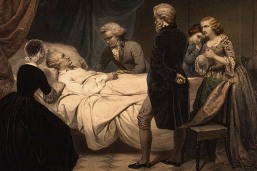Podcast: Play in new window
BOB HIRSHON (host):
Smarter headlights. I’m Bob Hirshon and this is Science Update.
If you drive at night through rain or snow, it’s hard to see. That’s partly because a car’s headlights light up the raindrops and snowflakes instead of the open road. Srinivasa Narasimhan and his colleagues at Carnegie Mellon University’s Robotics Institute are developing a headlight that won’t do that.
SRINIVASA NARASIMHAN (Carnegie Mellon University):
So what we are trying to do here is we are sort of subdividing that beam of light that is going out into tiny little beams, or pixels.
HIRSHON:
In other words, it works more like a movie projector than a light bulb. A high-speed camera constantly takes pictures of the rain or snow ahead, while a computer calculates where those droplets will be in a few milliseconds. That way, the headlight can keep adjusting itself, and shine its tiny beams only into the clear areas. Right now, each adjustment takes about 13 milliseconds; Narasimhan’s team wants to get it down to two or three. I’m Bob Hirshon for AAAS, the Science Society.

